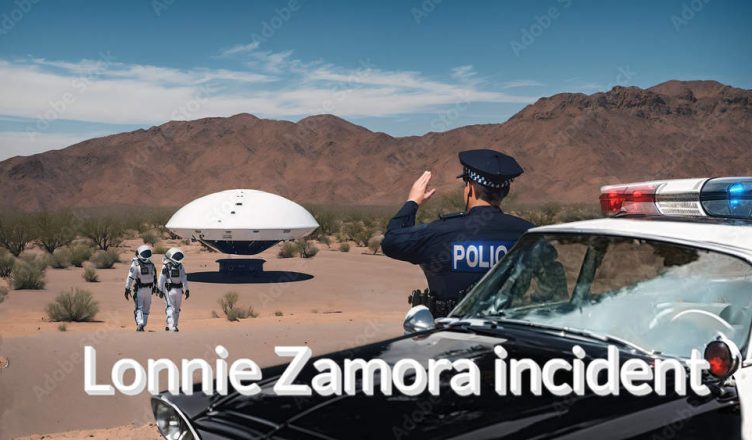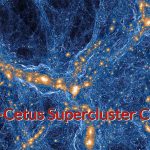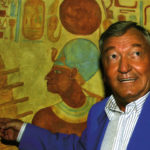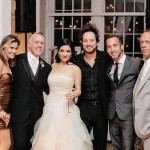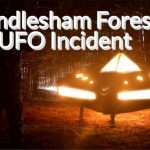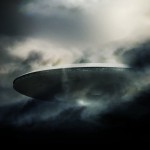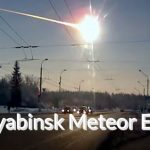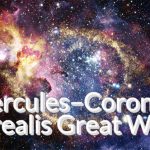After the 1947 Roswell incident, a wave of UFO research surged in the United States. Through twists and turns, by 1952, the U.S. Air Force officially initiated Project Blue Book, which continued until its comprehensive termination in January 1970. Collecting 12,618 UFO reports, the concluding report attributed most sightings to misidentified natural or man-made phenomena or deliberate falsehoods, leaving only 701 cases as unexplained.
Among the myriad UFO investigations, few perplexed U.S. Air Force investigators. However, the Socorro UFO sighting in 1964, New Mexico, left many involved in the inquiry utterly mystified.
Lonnie Zamora incident
The Lonnie Zamora incident is globally recognized as one of the most important UFO sighting cases and was considered by Dr. J. Allen Hynek, a UFO authority involved in the U.S. Air Force’s Blue Book project for 20 years, as a case with significant research value. The sighting, which occurred on April 24, 1964 (Friday) at 5:45 p.m. in the town of Socorro, New Mexico, has remained a subject of controversy for over 40 years and continues to be discussed today.
Lonnie Zamora, a 31-year-old state police officer at the time, observed a speeding black-and-white Chevrolet driven by what appeared to be a teenager in front of the police station. Zamora immediately jumped into a white Pontiac police car to pursue the speeding vehicle.
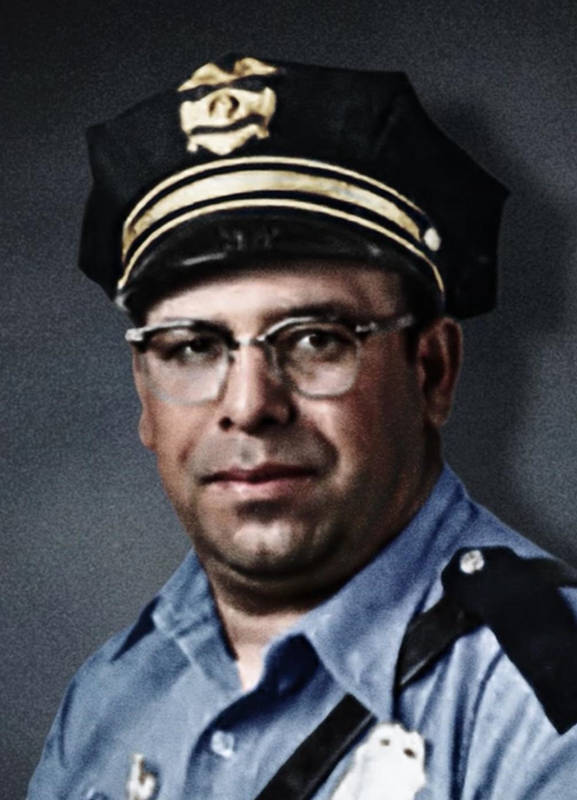
Lonnie Zamora (September 7, 1933 – November 2, 2009)
He continued to chase the speeding car until they reached Highway 85 outside of town. When the escaping vehicle was about a hundred meters away, Zamora first heard a loud noise coming from the vicinity and then saw flames in the sky about a kilometer to the southwest. Zamora initially thought of a local explosives warehouse in that direction and was concerned about a potential explosion. Therefore, he abandoned the pursuit of the speeding car and redirected the police car towards the direction of the sound and flames.
At this point, the car left the main road and entered an unpaved small road. Passing through a bumpy gravel road, Zamora slowly decelerated. He recalled that the shape of the flames resembled a funnel, appearing predominantly blue with a hint of orange. Moreover, it seemed to be motionless. The area at the bottom of the flames was twice the size of the top, and the length was twice the span of the bottom, giving it an elongated shape, resembling the flow of water.
As he approached the flames, he noticed that there was no visible bottom where the flames emanated. Because the canyon where the flames originated was lower than his line of sight, he continued to gaze. However, he observed another peculiar aspect – there was no smoke at all. At this point, Zamora felt something was amiss because in the case of an explosion, there should be smoke, and the stationary flames made the situation even more mysterious.
Zamora described the initial high-pitched sound that gradually transformed into a low pitch. This roaring sound lasted for only about 10 seconds, and the flames disappeared along with it. To see the explosives warehouse, he would need to climb the hill.
As Zamora’s police car was struggling up the slope in an effort to get a clearer view, the incline was steep, causing the gravel on the slope to start rolling down, significantly reducing the traction of the wheels. After three attempts, he finally reached the mountaintop, but by then, both the sound and flames had ceased.
At the mountaintop, Zamora, driving the police car, proceeded westward slowly. He surveyed the surroundings but found nothing unusual. Continuing the search for the explosives warehouse, he suddenly noticed a shining object to the south of the car, only 150 to 200 meters away. He then brought the car to a stop.
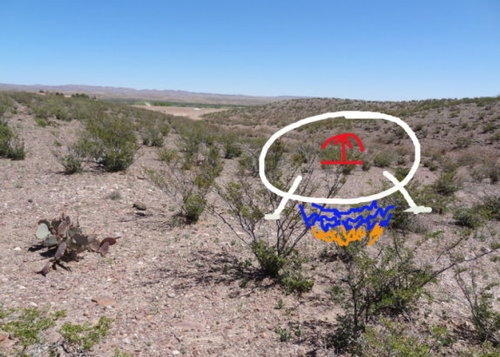
At that moment, Zamora’s initial reaction upon seeing the object was to consider it as an overturned medium-sized white car, speculating whether there had been a car accident or if other young people had abandoned a car here.
Suddenly, Zamora observed two individuals wearing white one-piece work suits, described as “little adults,” standing closely beside the object. The figures resembled “little adults” or slightly older children, according to his recollection. (Zamora only witnessed the white-clad figures for about 2 seconds.)
One of the “white-clad individuals” noticed Zamora’s presence, clearly startled. Thinking they might need assistance, Zamora approached in his police car. He then got a clearer view of the luminous object he had initially spotted; it was an oval-shaped, aluminum-white object with what appeared to be two support structures resting on the ground.
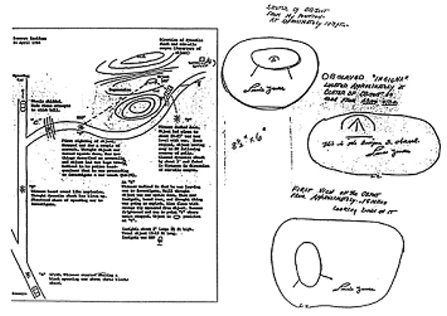
Zamora continued forward while simultaneously using the radio to contact the police chief’s office in the town, reporting a possible traffic accident with the driver busy repairing the vehicle. After stopping the car and stepping out, walking toward the object, the two white-clad individuals were nowhere to be seen. At this point, Zamora suddenly heard two or three loud sounds resembling heavy doors slamming shut, each separated by approximately 1 to 2 seconds.
When he was about 30 meters from the oval-shaped object, he heard a sudden roar, transitioning from low to high frequency, sounding much like the roaring noise produced by a jet engine (similar to what he heard when chasing the speeding car). Moreover, this noise was exceptionally loud, almost rupturing his eardrums. Simultaneously, Zamora saw a pale blue flame emitting from the bottom of the object, with orange below it. There was no smoke, but the flame touching the ground stirred up dust.
Frightened by the sight of the flame and the thunderous noise, and concerned that the object might explode, Zamora turned and ran quickly in the opposite direction (towards the police car), all the while glancing back at the object. He recalled that the object was smooth and oval-shaped, without windows or cabin doors, and had a distinctive emblem resembling red lettering on the side in the middle of the object.
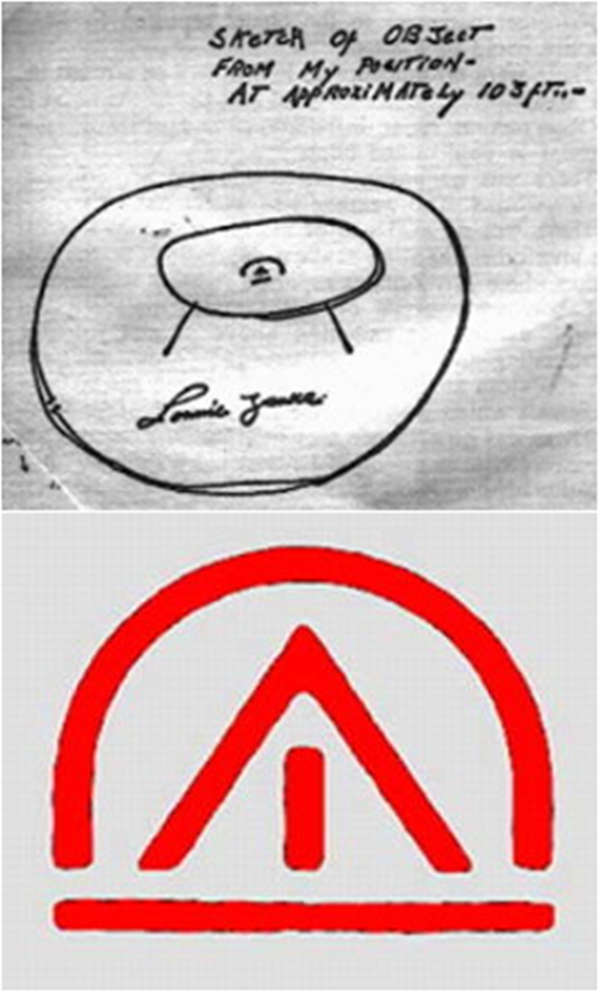
While running and looking back, Zamora intended to go around the back of the police car but accidentally ran too fast, hitting his leg on the bumper, tripping, and losing his sunglasses in the process. Despite this, Zamora quickly stood up and continued running backward. At this point, he observed that the object had risen to a height slightly higher than the car and, at a distance of 15 meters from the police car, climbed a small hill, hiding in the bushes to continue observing.
After the roaring sound ceased, Zamora hastily picked up his glasses from the ground, ran into the police car, grabbed the radio microphone, and contacted the police chief. While speaking, he continued to observe the object. The object was ascending higher and higher and eventually flew over the hill, disappearing from sight.
During the radio communication, the police chief asked Zamora what the object looked like. Zamora replied, “It looks like a balloon!”
(The object ascended rapidly after Zamora witnessed it emitting a loud noise and flames. From the moment he saw the object until it disappeared behind the hill, only a few dozen seconds elapsed.)
Later, when the police chief arrived at the scene, he also saw the egg-shaped object next to the burning bushes. Additionally, the legs supporting the egg-shaped object left four imprints on the ground. These imprints were arranged in an elongated oval shape, with a depth of 8-10 cm and a width of 30-50 cm, forming a U-shape.
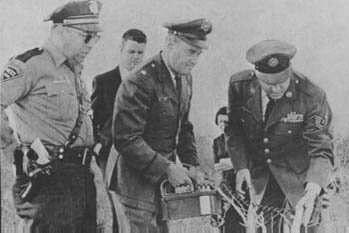
The police chief reported the incident to the Federal Bureau of Investigation (FBI). In an effort to understand the true nature of the event from various perspectives, the FBI called the White Sands Missile Range, approximately 5000 meters southeast of Socorro, initiating a prolonged investigation. Later, both the Army and the Air Force became involved in the investigation.
During this period, the normally quiet town of Socorro suddenly became bustling with reporters from magazines, radio, and television, with even Hollywood film companies making appearances.
Due to Officer Zamora’s aversion to the news media and film companies, as well as his reluctance to cooperate, he faced numerous questions and criticisms, becoming somewhat nervous.
Dr. Hynek, a UFO authority serving as a consultant in the U.S. Air Force Blue Book project, arrived at the scene on April 28 for an investigation. After interviewing Officer Zamora, he initially speculated that it might be related to the U.S. Apollo program, which was testing lunar modules for moon landings in New Mexico at the time. However, after further investigation, Hynek ruled out this hypothesis and considered the only valuable clue to be the red distinctive emblem on the egg-shaped craft. The incident was later included in the Blue Book project and filed as an unexplained UFO case.
Other notable UFO researchers, such as Philip J. Klass, suggested that the officer might have seen ball lightning. Some even questioned whether the event was a hoax orchestrated by Mayor Holm and Officer Zamora to attract tourists, create a theme park in the area, and develop local tourism. However, these accusations were sternly denied by the mayor and Officer Zamora.
Decades later, through interviews and investigations by foreign UFO researchers, it was revealed that the behind-the-scenes mystery of the Socorro UFO sighting was actually an elaborate student prank!
Analysis of the Socorro UFO Sighting:
It all began with Nobel laureate Dr. Linus Pauling, who was interested in UFO phenomena. Dr. Pauling wrote to his close friend Dr. Stirling Colgate, inquiring if he knew anything about the Socorro incident.
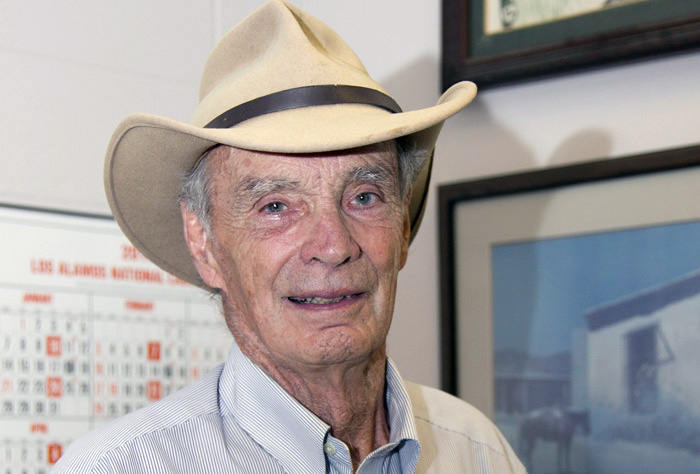
In 1968, Dr. Stirling Colgate, then serving as the dean of the local engineering technology school in New Mexico, was well-acquainted with the local gossip in Socorro town and within the college. Dr. Linus Pauling wrote a letter to him inquiring about the Socorro UFO incident.
In a letter dated 1968, stored in the Linus Pauling Papers at Oregon State University, Linus Pauling provided crucial secret clues about the Socorro UFO event!
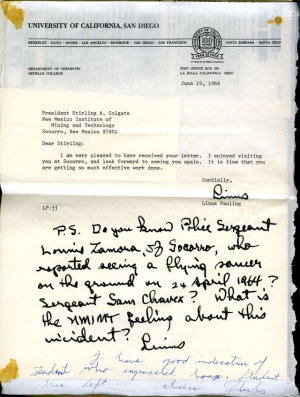
After Linus Pauling’s inquiry, Dr. Colgate responded in a handwritten letter, stating, “I know it was a prank orchestrated by some students, but those students have already graduated!” Dr. Stirling Colgate, the renowned astrophysicist and current president of a network technology company, is now 84 years old but still actively works in his office at Los Alamos National Laboratory.
Subsequently, an initial researcher investigating the incident wrote to Dr. Colgate, seeking his opinion on the 1964 Socorro sighting. Dr. Colgate, being mysterious and cautious in his response, confirmed that it was indeed a hoax.
When asked if he already knew it was a prank, Dr. Colgate replied, “Yes, that’s right!” He had also questioned the prankster students, but they were unwilling to discuss the matter further. One of the pranksters was reportedly a close friend of Dr. Colgate!
Dr. Colgate was surprised at this revelation because the letter was his response to Dr. Linus Pauling, and he wondered how the UFO researcher knew about it. He felt that revealing this publicly might cause unnecessary trouble!
Corroboration from a College Professor:
Another corroborating witness, Dr. Frank T. Etscorn, a psychologist and the inventor of the nicotine patch, served in New Mexico in the ’70s and early ’90s. In the mid-’80s, he spoke with a student who knew which alumnus was behind the prank but was reluctant to share too many details. They discussed how the students used materials from the school’s chemistry classroom to burn nearby bushes, and the soil was layered with chemical materials from the school’s geological laboratory. They even deliberately sped to lure Officer Zamora to the scene, making him witness the spectacle.
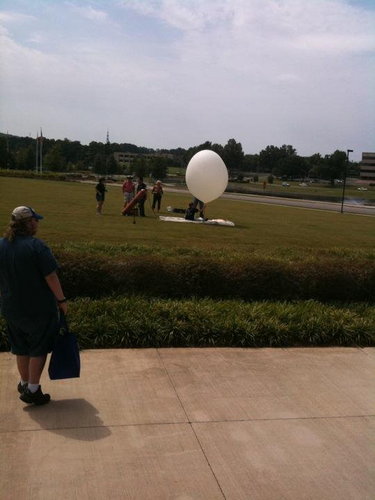
Another corroborating account comes from Dave Collis, currently a world-class explosives expert. When he was a freshman in college in New Mexico, he enjoyed planning pranks. In 1965, still a student, he and his classmates orchestrated several pranks. At that time, a professor (whose name he either forgot or cannot disclose) mentioned a “confidential” matter to him. The professor informed him that the Socorro police sighting of a UFO was a student prank!
At that moment, Dave Collis trusted the professor because Dr. Stirling Colgate was the respected dean of the college at that time. He believed both the professor and Dr. Colgate were aware of the incident but kept it hidden to protect the school’s reputation, avoiding publicly exposing the students responsible.
Dave Collis mentioned that Officer Zamora, the patrolman in the town, had a strained relationship with the students. Zamora would often harass the students without reason, creating dislike among many of them. Perhaps due to this, some students designed this prank to mock him.
In August 2012, the UFO researcher contacted Dr. Colgate again, and the response reiterated that it was indeed a prank involving at least 3-6 students. Dr. Colgate expressed concern for Officer Zamora and noted that the retired individuals who participated in the prank now felt regret and condemnation for the mental and emotional distress caused to Zamora. They hadn’t anticipated the consequences of their prank, and they deeply regretted the impact it had on Zamora’s life.
Dr. Colgate revealed that the materials used by the students to create the “oval-shaped white craft” were large hot air balloons and candles.
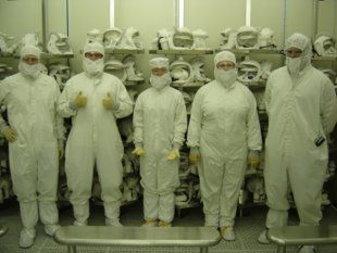
The roaring sound, the shift from low to high tones, and the flames heard by Zamora at that time originated from materials prepared by the organizers in the chemistry lab of the college. These materials were intended for fireworks to be set off on July 4, the United States Independence Day. The engineering institute had the most advanced fireworks lab in the United States at that time.
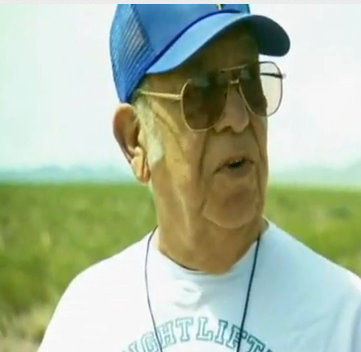
Little-known is the fact that Zamora, the witness of this event, originally worked as a mechanic in New Mexico for about seven years before becoming a patrolman. He had personal biases against the university students, who, in turn, considered him poorly educated, referring to him as an “uncultured cop.” Dr. Hynek mentioned in his report that, in his conclusion, Officer Zamora, although not particularly bright or articulate, was fundamentally honest.
The researcher later mentioned that he wasn’t pleased with the investigation’s outcome, but he believed that his investigation was a historical responsibility for truth. The prank made people genuinely believe that an extraterrestrial craft had landed that day, causing both the military and the police to invest considerable effort in handling the situation. Thus, this incident should serve as a lesson for all future reports of unidentified flying objects.
This is a relatively famous sighting event in UFO history, with most UFO research units and books worldwide introducing this case. Many people were puzzled by the special symbols on the object until we were fortunate enough to learn the truth behind this event.
Students from renowned foreign universities often enjoy playing pranks, and several well-known UFO events were also orchestrated by students. In this case, the pranksters were students from the New Mexico Institute of Mining and Technology. These students likely didn’t anticipate the troubles their “grand masterpiece” would cause many people, even the person involved.
For instance, Officer Zamora, involved in this event, resigned from the police force two years later due to the distress and societal pressure caused by the incident. He took a managerial position at another gas station. At that time, many media outlets questioned whether he and the mayor conspired to fabricate this hoax to attract tourists, leading to the development of local tourism. Officer Zamora, the original witness, passed away on November 2, 2009, at the age of 76.
To reconstruct the entire event:
Initially, a student deliberately speeding in a black Chevrolet attracted Officer Zamora’s attention. In his report, Zamora mentioned, “The driver of the speeding black Chevrolet was a young person about 17 years old,” consistent with college-age students. Then, other students at the scene used fireworks materials from the school’s lab to create powerful explosive sounds, drawing Zamora over. (As there was an explosives warehouse nearby, Zamora was concerned about a potential explosion.)
The two “little white men” (students in white lab suits) observed by Zamora actually did not enter the large balloon. Zamora’s report also mentioned, “Did not see them enter the object.” While Zamora panicked and rushed backward, the two students took the opportunity to escape in the opposite direction, avoiding being seen by the patrolman. The balloon and the chemical materials burning on the ground all came from the university’s lab. When the balloon flew away, Zamora radioed the chief, describing the object as “resembling a balloon.”
The supporting frame below the object seen by Zamora was actually a prop made of cardboard by the students. The “traces” on the ground were also manually excavated by students, with some chemicals placed around the traces.
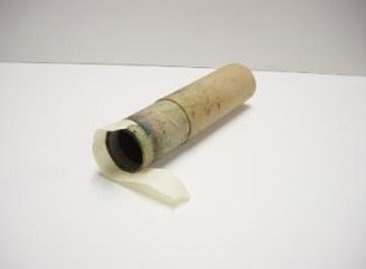
END:
Behind this story lies the discontent of university students with the local police and a challenge to academic authority. Even years after the incident, it serves as a reminder to exercise caution when dealing with unidentified flying object reports, avoiding the influence of pranks or misleading information. The Lonnie Zamora incident may be a peculiar anecdote in the history of UFO research, but it also cautions us to adhere to scientific principles and truth when handling similar events.
As for the authenticity of this event, it reminds us to maintain a skeptical attitude when receiving and transmitting information. We should learn to exercise careful judgment, not relying solely on a single source of information. While this event may leave us disappointed, it is also an important reminder, prompting us to place greater emphasis on maintaining the quality of research and information.
Such events, though posing challenges to the academic community, also present an opportunity for reflection, improvement, and collaborative efforts to establish a more reliable knowledge system.
More UFOs and mysterious files, please check out our YouTube channel: MysFiles
Nazca Lines: The strongest evidence that aliens have visited the earth
